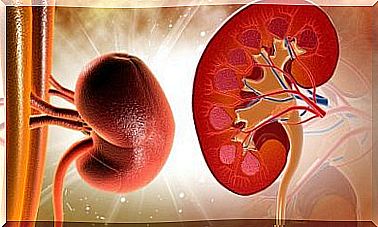Meningococcal Septicemia, A Serious Illness We Should Be Aware Of

Meningococcal septicemia is a medical emergency that should therefore be treated as soon as possible. It is a rapidly progressing disease that can cause shock and simultaneous failure of various organs in the body.
This condition stems from a meningococcus infection. The World Health Organization (WHO) estimates that there are around 500,000 new infections per year. Between 20 and 50% of those who develop meningococcal sepsis die.
meningococcal disease
Meningococcal disease is caused by a meningococcus. It is a bacterium that causes serious illness and is acquired by contact with droplets that an infected person expels when coughing or sneezing.
Some individuals are very sensitive to this bacteria, but science doesn’t know why. The truth is that this microorganism progressively invades the nasopharynx. The interval between contagion and the onset of symptoms is about 10 days, although it can be shorter.
Soon after, the meningococcus penetrates the mucosa and enters the bloodstream. The most common presentation of this type of disease is meningitis or inflammation of the meninges, which are the membranes that cover the brain and spinal cord.
One of the possible effects of meningococcal disease is the development of meningococcal sepsis. This is a very serious condition with a high mortality rate. Those who survive may be left with permanent sequelae.

Also Read: 6 Meningitis Symptoms Parents Shouldn’t Ignore
meningococcal septicemia
Meningococcal sepsis is a form of septic shock, which is a medical condition in which tissues and organs do not receive enough oxygen and nutrients. The consequence of this is a gradual death of cells and a general failure that can lead to death.
Multiplication of the meningococcus in the blood forms clots. These hinder circulation in one or more organs or extremities, causing gangrene. Paradoxically, hemorrhages that are difficult to control also occur.
It is estimated that one in four people with this disease will require a limb to be amputated. Likewise, sepsis causes skin lesions that generate scars and lead to deformities. This last condition often leads to surgery and has a very slow healing process.
Symptoms and manifestations of meningococcal septicemia
The symptoms of this pathology are very broad. At first, a mild fever may appear, but in many cases this escalates into multiple organ failure and death within hours.
Typically, within the first four to six hours, symptoms common to any viral infection appear : fever, chills, dizziness, nausea, headache, and weakness. There may also be diarrhea and vomiting.
In addition to these manifestations, the typical symptoms of sepsis are as follows:
- Pale and mottled skin.
- Accelerated breathing.
- Tremors in cold hands and feet.
- Drowsiness and confusion.
- Low blood pressure.
- Pain in joints or limbs.
- Rash-like rash : A sepsis-derived rash looks like small, bright red patches. They can coalesce and take the form of fresh bruises. Not all people with this condition have them.
Diagnosis and treatment
Meningococcal septicemia can present with or without meningitis. Usually, the diagnosis is made from a blood test, a swab (swab) in the nasopharynx mucosa, a chest X-ray and a stool sample.
The treatment of the disease is carried out in a hospital or medical clinic, but does not require isolation. The conventional approach includes four measures:
- Administration of antibiotics : should be administered early. If there is a visible focus of sepsis or infection, it must be drained.
- Fluids: parenteral hydration is performed to fill the vascular space and maintain blood pressure, so that extreme hypotension is not reached.
- Use of vasoactive drugs : these drugs neutralize the cardiocirculatory changes that, in turn, result from the inflammation caused by sepsis.
- Life support measures : include oxygen administration, tracheal intubation and mechanical ventilation. If bleeding occurs, coagulants and fresh frozen plasma are usually used.

Prevention of meningococcal septicemia
Prevention of meningococcal sepsis consists mainly of preventing infection through the meningococcus. There are two vaccines available to contribute to this purpose:
- Pneumococcal vaccine : protects against pneumococcal meningitis. It is on the infant vaccination calendar and is often given to people over 65 years of age. It is speculated that this vaccine may cross-react and similarly prevent meningococcal infections. In any case, for the time being, it should only be considered effective against S. pneumoniae.
- MenC: offers protection against the type C meningococci group. It is applied to babies and is available for children under 25 years old.
Vaccines do not protect against all types of meningococci, but they greatly reduce the circulation of bacteria most associated with the problem. Other prevention guidelines are limiting contact with patients, frequent hand washing and personal hygiene.









